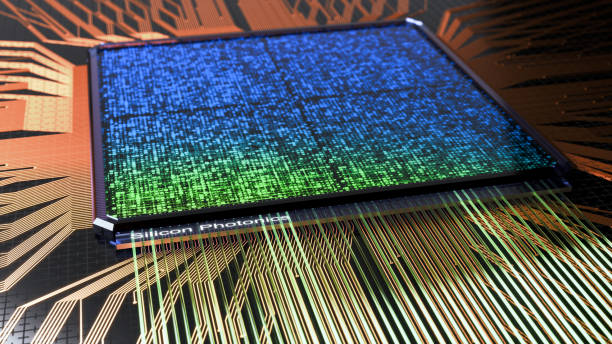Liquid Metal Processors: Computing's Fluid Future
In the relentless push for smaller, faster, and more efficient computing architectures, researchers have begun exploring an unconventional avenue that sounds like science fiction: liquid metal processors. These malleable computing components promise to revolutionize how we think about hardware flexibility, heat management, and computational density. Unlike traditional silicon-based chips with fixed pathways, liquid metal systems could potentially reconfigure themselves on demand, creating entirely new paradigms for next-generation computing environments. As thermal limitations increasingly constrain conventional processors, this fluid approach might offer the breakthrough the industry desperately needs.

The science behind liquid metal computing
Liquid metal computing centers around materials like gallium and its alloys, which remain liquid at or near room temperature while retaining excellent electrical conductivity. Unlike mercury, these gallium-based compounds present significantly lower toxicity concerns while offering remarkable properties that researchers are eager to exploit. When carefully manipulated, these metals can form dynamic circuits that change configuration based on electrical, thermal, or even mechanical inputs.
The fundamental advantage stems from their dual nature: they behave both as excellent conductors and as shape-shifting substances that can be precisely controlled. Research teams at universities including North Carolina State University and RMIT University in Australia have demonstrated that gallium alloys can be moved, split, merged, and patterned through relatively simple mechanisms. This allows for computing architectures where the physical pathways of computation aren’t permanently etched in silicon but dynamically established as needed.
Beyond rigid constraints: self-healing circuits
One of the most promising aspects of liquid metal technology is its inherent ability to “self-heal.” While traditional processors suffer permanent damage when physical connections break, liquid metal systems can naturally restore connections through their fluid properties. This characteristic offers profound implications for electronics reliability and longevity, particularly in harsh environments where conventional computers struggle.
Several research labs have demonstrated prototype systems where intentionally severed liquid metal connections re-establish themselves within milliseconds. This property could revolutionize computing in extreme environments like space exploration, deep-sea applications, or military systems where hardware durability represents a critical concern. Moreover, this self-healing capability opens possibilities for genuinely adaptive systems that respond to damage by rerouting computational pathways automatically.
Thermal advantages in an overheating world
As conventional processors push against fundamental thermal limits, liquid metal systems offer intriguing cooling possibilities. These systems potentially serve dual purposes: functioning as both the computational medium and an integrated cooling solution. The high thermal conductivity of gallium alloys means they can simultaneously process information while transferring heat away from critical components.
Researchers at Carnegie Mellon University have explored designs where liquid metal serves triple duty: computing element, thermal management system, and reconfigurable interconnect. This approach directly addresses one of computing’s most significant challenges—heat dissipation—while enabling new computational architectures impossible with fixed silicon designs. Preliminary studies suggest these systems could operate at significantly higher power densities than conventional processors without traditional cooling solutions.
Reconfigurable hardware: computing that adapts
Perhaps the most revolutionary aspect of liquid metal computing is the potential for truly reconfigurable hardware. Unlike FPGAs (Field Programmable Gate Arrays) which offer limited reconfigurability within fixed silicon constraints, liquid metal systems could theoretically reshape their entire physical architecture on demand. This capability would blur the traditional boundary between hardware and software, creating systems that physically transform to optimize for specific computational tasks.
Imagine a processor that literally reshapes its circuits when switching from video rendering to data analysis, optimizing its physical structure for each specific workload. Early prototypes demonstrated at IBM Research and several university labs have shown primitive versions of this capability, where liquid metal channels reconfigure to create different logical gates and circuits based on external commands. While still experimental, this approach promises computing efficiency currently impossible with static hardware designs.
Commercial reality: challenges and timeline
Despite the exciting potential, liquid metal processors face significant hurdles before reaching commercial viability. Current research systems operate at much lower speeds and densities than silicon processors, and controlling liquid metal precisely at nanoscale dimensions remains extremely challenging. Containment represents another major issue, as gallium alloys can interact with and degrade certain materials commonly used in electronics.
Industry analysts estimate commercial applications might begin appearing in specialized niches within 3-5 years, with prices likely starting in the thousands of dollars for simple systems. Mass-market applications could follow 5-10 years later if technical challenges are overcome. Companies including Intel, Samsung, and several well-funded startups have established research programs in this area, suggesting serious commercial interest despite the technical challenges.
The hybrid future
Most experts believe liquid metal computing won’t replace silicon entirely but instead complement traditional approaches in specific applications. The most promising near-term implementations combine conventional semiconductors with liquid metal interconnects or cooling systems. These hybrid architectures leverage the maturity and speed of silicon while exploiting liquid metal’s unique properties for reconfigurability and thermal management.
Early commercial applications will likely target edge computing scenarios where adaptability and environmental resilience matter more than raw processing speed. As manufacturing techniques mature and researchers solve containment challenges, we may see these systems gradually expand into data centers and specialized computing applications where reconfigurability offers significant advantages.
While still firmly in the experimental stage, liquid metal computing represents one of the most intriguing approaches to pushing beyond the limitations of conventional processor design. As silicon reaches its physical limits, these shape-shifting systems might flow into the gaps, creating new possibilities for computing’s future.





